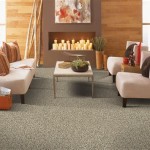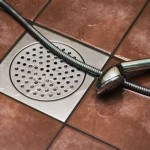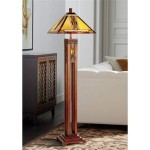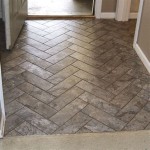Light Gray Engineered Wood Flooring: A Comprehensive Guide
Light gray engineered wood flooring has emerged as a popular choice for residential and commercial spaces, offering a blend of aesthetic appeal, durability, and versatility. Its neutral tone serves as a sophisticated backdrop for a wide range of interior design styles, while the engineered construction provides enhanced stability compared to solid hardwood. This article delves into the characteristics, advantages, installation considerations, and maintenance requirements of light gray engineered wood flooring, providing a comprehensive understanding for homeowners and designers alike.
Engineered wood flooring differs from solid hardwood in its construction. It comprises multiple layers, typically with a core of plywood, high-density fiberboard (HDF), or other composite material, topped with a veneer of real hardwood. This multi-layered structure gives engineered wood flooring greater resistance to moisture and temperature fluctuations, making it suitable for installation in areas where solid hardwood might be problematic, such as basements and bathrooms. The light gray color is achieved through various staining or finishing processes applied to the hardwood veneer, allowing for a consistent and aesthetically pleasing appearance.
The popularity of light gray flooring stems from its ability to create a bright, airy, and modern feel within a space. It complements both warm and cool color palettes, making it a versatile choice for various design schemes. Furthermore, light gray tones tend to visually expand a room, making it feel larger and more open. Its neutral nature also allows furniture and décor to stand out, rather than competing for attention.
Aesthetic Versatility and Design Applications
The aesthetic versatility of light gray engineered wood flooring is a significant factor in its widespread adoption. It seamlessly integrates into diverse interior design styles, ranging from contemporary minimalist to rustic farmhouse. In modern settings, light gray floors provide a clean and sophisticated foundation, enhancing the sleek lines and neutral tones often associated with this style. When paired with minimalist furniture and stainless steel accents, the result is a polished and uncluttered space.
In more traditional or rustic settings, light gray flooring can create a sense of understated elegance and warmth. When combined with natural wood furniture, woven textiles, and earthy tones, the light gray provides a subtle contrast that enhances the overall character of the room. This combination can be particularly effective in creating a cozy and inviting atmosphere.
Furthermore, light gray flooring serves as an excellent backdrop for showcasing artwork and other decorative elements. Its neutral tone allows colors and textures to pop, creating visual interest and preventing the room from feeling overwhelming. The light color also helps to reflect natural light, brightening the space and making it feel more inviting.
The specific shade of light gray can also influence the overall aesthetic. Lighter grays tend to create a more Scandinavian-inspired look, emphasizing minimalism and natural light. Darker grays, on the other hand, can add a touch of sophistication and drama, particularly when paired with bold colors and luxurious textures. The choice of gray depends on the desired mood and the overall design vision.
The finish applied to the light gray engineered wood flooring also plays a vital role in its aesthetic. Matte finishes create a more natural and understated look, while glossier finishes provide a more polished and refined appearance. The texture of the flooring, whether smooth or hand-scraped, can also add to the overall character of the space.
Advantages of Engineered Wood Construction
Beyond its aesthetic appeal, the engineered construction of this flooring offers several advantages over solid hardwood. One of the primary benefits is its enhanced stability. The multi-layered structure minimizes the effects of moisture and temperature fluctuations, reducing the likelihood of warping, cupping, or gapping. This makes engineered wood flooring a more suitable option for areas with varying humidity levels, such as basements and bathrooms. While not waterproof, it is more water-resistant than solid hardwood.
Another advantage of engineered wood flooring is its compatibility with underfloor heating systems. The stable construction of the flooring allows it to withstand the temperature changes associated with underfloor heating, without compromising its integrity. This makes it a comfortable and energy-efficient choice for modern homes.
Furthermore, engineered wood flooring is typically easier and faster to install than solid hardwood. Many engineered wood flooring products feature click-lock installation systems, which allow planks to be easily snapped together without the need for nails or glue. This simplifies the installation process and reduces the time and cost associated with professional installation. However, proper subfloor preparation is still crucial for a successful installation.
The cost-effectiveness of engineered wood flooring is another factor that contributes to its popularity. While the price of engineered wood flooring can vary depending on the quality of the materials and the thickness of the hardwood veneer, it is generally more affordable than solid hardwood. This makes it a viable option for homeowners who want the look and feel of real wood without the high price tag.
Additionally, engineered wood flooring is a more sustainable option than solid hardwood. Because it uses a thinner layer of hardwood veneer, it requires less wood to produce, conserving natural resources. The core layers are often made from recycled wood fibers or sustainable wood sources, further reducing its environmental impact.
Installation and Maintenance Considerations
Proper installation and maintenance are crucial for maximizing the lifespan and appearance of light gray engineered wood flooring. Before installation, the subfloor must be clean, level, and dry. Any imperfections in the subfloor can telegraph through the flooring, leading to uneven surfaces and potential damage. It is recommended to use a moisture meter to ensure that the subfloor is within the acceptable moisture range before proceeding with the installation.
Acclimation is another essential step in the installation process. Engineered wood flooring should be allowed to acclimate to the ambient temperature and humidity of the room for several days before installation. This allows the flooring to adjust to its new environment, minimizing the risk of expansion or contraction after installation. Follow the manufacturer's recommendations for acclimation time and conditions.
When installing engineered wood flooring, it is important to use the appropriate tools and techniques. Follow the manufacturer's instructions carefully, paying attention to details such as expansion gaps, staggering the planks, and using the correct type of underlayment. Improper installation can lead to issues such as buckling, gapping, and squeaking.
Regular maintenance is essential for preserving the beauty and durability of light gray engineered wood flooring. Sweep or vacuum the floor regularly to remove dirt and debris. Use a damp mop (not a soaking wet mop) with a pH-neutral wood floor cleaner to clean the floor as needed. Avoid using harsh chemicals, abrasive cleaners, or steam mops, as these can damage the finish. Always follow the manufacturer's recommendations for cleaning products and techniques.
Protect the flooring from scratches and dents by using felt pads under furniture legs. Avoid wearing shoes with high heels or cleats on the floor. Use rugs or mats in high-traffic areas to protect the finish from wear and tear. Clean up spills immediately to prevent staining or water damage.
Over time, the finish on light gray engineered wood flooring may show signs of wear and tear. Depending on the thickness of the hardwood veneer, the floor may be able to be refinished to restore its original appearance. Consult with a flooring professional to determine if refinishing is an option and to receive guidance on the best refinishing techniques.
Light gray engineered wood flooring offers a compelling combination of aesthetic appeal, durability, and versatility, making it a popular choice for homeowners and designers alike. By understanding its characteristics, advantages, installation considerations, and maintenance requirements, one can make an informed decision and enjoy the beauty and functionality of this flooring option for years to come.

Hydropel Light Gray Hickory 7 16 T X W Waterproof Engineered Hardwood Flooring Sqft Case Hainantan Org Sg

Kronotex Mammut Macro Oak Light Grey Laminate Flooring 12mm Range Direct

Natura Oak St Kitts Flooring Supplies

Grey Wood Flooring Free Samples Available Factory Direct

Hydropel Light Gray Hickory 7 16 T X W Waterproof Engineered Hardwood Flooring Sqft Case Hainantan Org Sg

Grey Wood Flooring Light Dark Styles Flooringsupplies Co

Bespoke Natural Grey Engineered Oak From Reclaimed Flooring Co Farm House Living Room Design Styles

Light Grey Oak Engineered Wood Flooring 15mm X 190mm Brushed Uv Lacquered Brilliant

Grey Wood Flooring Free Samples Available Factory Direct

Hydropel Light Gray Hickory 7 16 T X W Waterproof Engineered Hardwood Flooring Sqft Case Hainantan Org Sg








